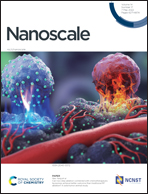Cost-effective carbon fiber precursor selections of polyacrylonitrile-derived blend polymers: carbonization chemistry and structural characterizations†
Abstract
Blending polyacrylonitrile (PAN) with plastic wastes and bio-based polymers provides a convenient and inexpensive method to realize cost-effective carbon fiber (CF) precursors. In this work, PAN-based blend precursors are investigated using ReaxFF reactive molecular dynamics simulations with respect to the formation of all-carbon rings, the evolutions of oxygen-containing and nitrogen-containing species, and the migration of carbon atoms to form turbostratic graphene. From these simulations, we identify that PAN/cellulose (CL) blend manifests the highest carbon yield and the most substantial all-carbon ring formation. This ReaxFF-based finding is confirmed by Raman and TEM experiments indicating high crystallinity for PAN/CL-derived blend CFs. We trace the pathway of gasification and carbonization of PAN/CL to elaborate the mechanism of the formation of all-carbon ring networks. We discover that the acetals of CL can catalyze the cyclization of the blend precursor, allowing for the search for CL derivatives or the other kinds of bio-based polymers with similar functionalities as alternative blends. In addition, we examine the structural characteristics using the carbon–carbon (C–C) radial distribution functions, C–C bond length distributions, and sp2 C atom ratios for the four representative precursors, i.e., PAN, oxidized PAN, PAN/nylon 6,6, and PAN/CL. Our simulation results show the most extensive all-carbon ring cluster and graphitic structure growths for PAN/CL. Therefore, we propose PAN/CL as a cost-effective alternative CF precursor, since (a) CL is naturally abundant and eco-friendly for production, (b) the blend precursor PAN/CL does not require oxidation treatment, (c) PAN/CL has a high carbon yield with substantial all-carbon ring formation, and (d) PAN/CL based CFs potentially provide a mechanical property enhancement.



 Please wait while we load your content...
Please wait while we load your content...